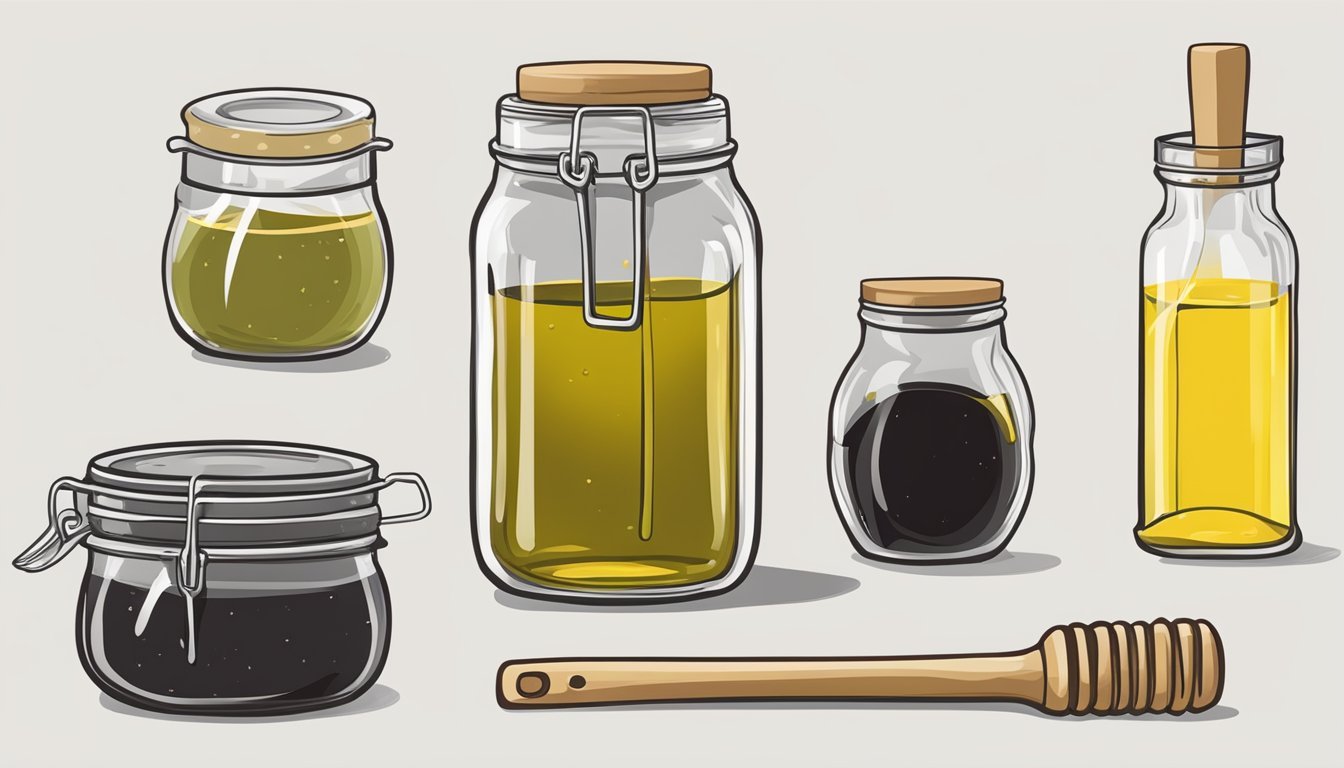Easy Salad Dressing for those Lazy Days
Salad dressing is the hidden champion of any great salad, adding flavor, moisture, and character to the most basic assortment of greens and veggies. On days when time and energy are short, one might think that a delicious, homemade dressing is out of reach. However, concocting a tasty and easy salad dressing with minimal effort is entirely possible. This guide aims to provide quick solutions for those lazy days when even the thought of extravagant food preparation seems daunting.
It's common for people to reach for store-bought dressings to save time, but these can often contain preservatives, unnecessary sugars, and excessive sodium that overshadow the natural goodness of a fresh salad. Making a simple dressing from scratch not only gives one control over the ingredients but also ensures the salad dressing complements the salad's fresh components.
Many easy salad dressing recipes require just a handful of pantry staples like olive oil, vinegar or lemon juice, and a few seasonings. With these simple ingredients, a nourishing and appetizing salad dressing can be whipped up in no time. This approach not only maintains the integrity of the salad but also enhances the overall eating experience with fresh, zesty flavors that are free from the additives found in commercial dressings.
Crafting the Perfect Salad Dressing
When creating homemade salad dressings, understanding the essentials of ingredients and techniques is crucial for achieving the perfect blend of flavor and texture.
Essentials of Dressing Ingredients
For a basic homemade salad dressing, combine virgin olive oil and balsamic vinegar or lemon juice as the foundation. Common oils include olive oil, while vinegars range from balsamic to apple cider vinegar. Enhance these dressings with salt and pepper for seasoning, and add garlic, honey, or Dijon mustard for depth.
Creating Balance and Flavor
Achieving a harmonious balance in salad dressing requires a careful mix of acidity, sweetness, savoriness, and seasoning. To do this:
Start with a 3:1 ratio of oil to vinegar for a balanced base.
Incorporate lemon juice or citrus for a fresh zing.
Add honey or sugar to counteract excess acidity.
Vinaigrette Varieties and Emulsions
Crafting a vinaigrette involves creating an emulsion to blend oil and vinegar together.
Whisk vigorously or shake in a sealed container to emulsify.
For a basic vinaigrette recipe, mix:
3 parts olive oil or extra virgin olive oil
1 part white wine vinegar or lemon juice
Salt and pepper to taste
Experiment with balsamic, red wine, and citrus vinaigrettes.
Specialty and Creamy Dressings
Creamy dressings often use ingredients like yogurt, buttermilk, or mayonnaise as a base. Popular options include ranch dressing which combines herbs, garlic, and onion with a creamy base; Caesar salad dressing which features Parmesan cheese, lemon juice, and a touch of anchovy; and blue cheese dressing which incorporates chunks of blue cheese for a robust flavor.
Dressings for Dietary Preferences
Addressing dietary preferences is simple with salad dressing variations. For vegan ranch dressing, substitute traditional dairy with plant-based alternatives. Create dairy-free vinaigrettes with olive oil and vinegar bases. For lower calorie options, consider citrus salad dressings heavy on lemon or lime juice with minimal oil.
Practical Tips for Homemade Dressings
Creating homemade dressings is a seamless way to enhance the flavor of salads (What wine goes well with salads?) with fresh, personalized touches. A well-crafted dressing can elevate even the simplest greens into a memorable dish.
The Convenience of a Blender or Food Processor
When whipping up homemade dressings, using a blender or food processor affords both speed and a smooth consistency. Ingredients like olive oil, vinegar, and herbs can be easily emulsified. Creamy dressings such as homemade ranch or caesar benefit from a thorough blend to incorporate all components uniformly.
Preserving Your Dressing: Shelf Life and Storage
Shelf life is critical for homemade dressings. To maximize longevity, store dressings in a mason jar with a tight lid and refrigerate. A mixture containing vinegar or citrus juice can last up to two weeks, but those with fresh garlic or herbs should be used within a week. Avoid preservatives to keep the flavors natural.
Dressing the Part: Pairings and Usage
The right dressing can transform a dish. Italian salad dressing pairs well with traditional mixed greens, while a honey mustard salad dressing complements more robust flavors like arugula or spinach. Coleslaw dressing will bring a bitter cabbage to life, and apple cider vinegar dressing can be a light accompaniment for a fruit-infused salad.
Enhancing Flavor with Fresh and Global Twists
Incorporate fresh herbs (how long do fresh herbs last?) like parsley or chives (how long do chives last?) or global ingredients such as sesame oil (how long does sesame oil last?) and soy sauce to introduce unique flavors. An avocado oil-based dressing with lime juice creates a zesty alternative, and poppy seed dressing is sweet and textured. Combine peanut dressing with rice wine vinegar for an Asian-inspired twist.
Dressing Innovations: Experimenting with Ingredients
Experimentation leads to innovation in dressings. Try different oils like sesame or avocado, each with its distinct flavor profile. Add kosher salt and black pepper to taste, but don’t shy away from more creative additions like water to thin out dressings or fresh garlic for a punch of flavor. The key is to find the right balance that complements your salad while intriging the palate.


